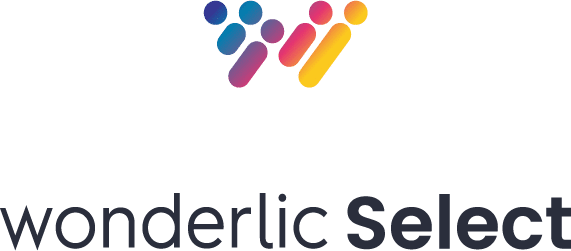Sticking to your tried and true hiring methods could be hurting you more than you think.
Even the most conscientious talent pros sometimes lean on outdated “best practices” and struggle with unconscious biases that can make strong candidates look like a red flag.
Ready to find the right talent faster? Here are 7 hiring mistakes you might be making that could be holding you back—and a few new ways of thinking that could help.
1. Assuming that job-hopping is a red flag

Don’t automatically downgrade candidates who don’t stay at a single job for more than a year or two. Yes, turnover is expensive and team leaders like the continuity of having long-term employees, but the story behind a candidate’s resume might not be what you assume.
It’s impossible to understand the circumstances behind a career path without talking to the candidate. Their previous positions might have been a bad fit, or maybe they changed jobs a lot because they relocated a lot.
Or…maybe the candidate is simply the type of talented person who tends to make a big impact in a short amount of time and then move on to do the same thing somewhere else. (And wouldn’t you rather have a superstar like that for 18 months, rather than someone “fine” for three years?)
Also, shorter tenures are becoming the norm: According to the 2019 Deloitte Millennial Survey, 43% of Millennials plan on leaving their current role within the next 2 years. Additionally, short job stints are more the rule than the exception in some industries (especially tech). For example, according to a list published by Business Insider, employees spend an average of 1.8 years at Uber, 2.2 years at Tesla, 2.5 at Facebook, and 3.1 at Netflix. Employees at Google and Amazon stay an average of just one year.
2. Not advertising internally enough
If you overlook internal candidates during the hiring process, you could be missing out.
According to LinkedIn’s Global Talents Trend 2020 Report, internal recruiting has increased by 10% since 2015, and for good reason:
- 81% of talent professionals claim it improves retention
- 69% believe it accelerates new hire productivity
- 63% say it accelerates the hiring process
There’s a built-in advantage to considering existing employees for other roles, too: they’re familiar with your business and company culture and you’re familiar with them, too—their strengths and weaknesses, how they work as part of a team, and so on.
Your existing employee could be the perfect candidate, but they can’t apply to a job they don’t know about. So make sure to actively advertise role openings within your company, in all the communication channels your employees engage with most.
3. Focusing too much on active candidates and the big job boards

Posting a job description on Monster.com, Indeed, and ZipRecruiter, and waiting for the applications to flood your inbox shouldn’t be your only strategy. The best candidate for your opening might not even be actively looking for a new position.
According to a recent LinkedIn study, active candidates (the ones looking for a new job) make up only 30% the global workforce. And despite the fact that the other 70% of candidates aren’t actively looking for a new position, 87% of both active and passive candidates are open to new opportunities. So if you’re only considering the people actively making themselves available for new opportunities, you’re limiting yourself and your company.
Here are a few other useful approaches to attracting talent:
Strengthen your social media presence
Expand your reach beyond the aforementioned 30% by strengthening your social media presence to engage people with your company’s “brand.” If they’re already fans of your company when they’re employed somewhere else, they’re more likely to turn to you when they’re ready to make a move.
Try narrower, more targeted channels
Consider the value of putting out feelers on Facebook chat boards, at networking events, or to members of any professional organizations related to the position.
Improve your employee referral program
Your employee referral program can also play a key role in locating your ideal hire. To make it more effective:
- Set measurable goals for the program (and track your success)
- Create an easy referral process with one simple online form and an email template for employees referring qualified candidates
- Offer incentives (ask your employees what they want!)
Talk to your peers and colleagues elsewhere
Finally, don’t ignore the power of the grapevine. Consistent, purposeful networking is a powerful method for discovering qualified new hires.
4. Weighting industry-specific experience too much
Employers tend to look favorably on those who’ve logged time in the same field (91% of employers prefer candidates who have work experience, and 65% prefer that these candidates have relevant work experience, according to NACE’s Job Outlook 2017 survey).
But if you’re too quick to discount those without industry experience, you’re shooting yourself in the foot. In fact, according to research by renowned I-O psychologist, Frank Schmidt, experience is a low predictor of future success.
Compared to using no selection tools at all, job experience leads to a 13% improvement in average performance, as compared to 24% for personality tests, 28% for reference checks, and more than 70% for cognitive ability tests.
5. Putting too much stock in an impressive education
Avoid getting too starstruck by an impressive college degree.
According to a recent Wonderlic study, education is an even less effective predictor of job performance than job experience. Specifically, education is only 6% more effective than flipping a coin in determining success while job experience is 10% more effective than flipping a coin.
A recent Indeed study of 500 managers came to a similar conclusion. When asked about the attributes of top performers, managers said the college name on a degree is the least important: only 35% agreed that top performers generally come from top schools. The survey concluded that the attributes that matter most are working well with others (72%), being a strategic thinker (71%), and being self-directed (66%).
6. Valuing interviews above all

The interview process can be highly subjective and biases often skew results. An interviewee might be a highly qualified candidate but come off as awkward—and seem less desirable as a result. Other interviewees can fool interviewers by being good at “impression management,” seeming competent during the interview only to underperform when the real work begins.
You can use structured interviews to minimize these issues, but even they shouldn’t be considered the ultimate measure of whether a candidate is the right fit for the job.
7. Not taking full advantage of pre-employment testing
The job experience and education found on resumes and the insights provided by interviews fail in one critical way: they’re all unable to unearth the underlying traits of candidates that can help you predict how they’ll perform in the job they’re now applying for.
This is where pre-employment assessments can be extremely helpful.
Hiring assessments have become more common in the past decade: according to a recent Talent Board report, 82 percent of companies are now using some form of pre-employment assessment test. The problem is that many companies are using tests that aren’t particularly predictive of success—like integrity or emotional intelligence tests. Or they’re using personality tests never intended to be used as a selection tool (like the Myers-Briggs) to vet job candidates.
According to research by I-O psychologist Frank Schmidt, the best single measure of a candidate’s potential is a cognitive ability test. And the best overall test is a multi-measure test that incorporates cognitive ability, as well as other measures like personality and interests, which add what’s called incremental validity to the findings.
Find out more about the power of multi-measure hiring assessments here.
The needs and wants of your job candidates and employees have changed dramatically in the past year — but has your recruiting strategy changed with them?








